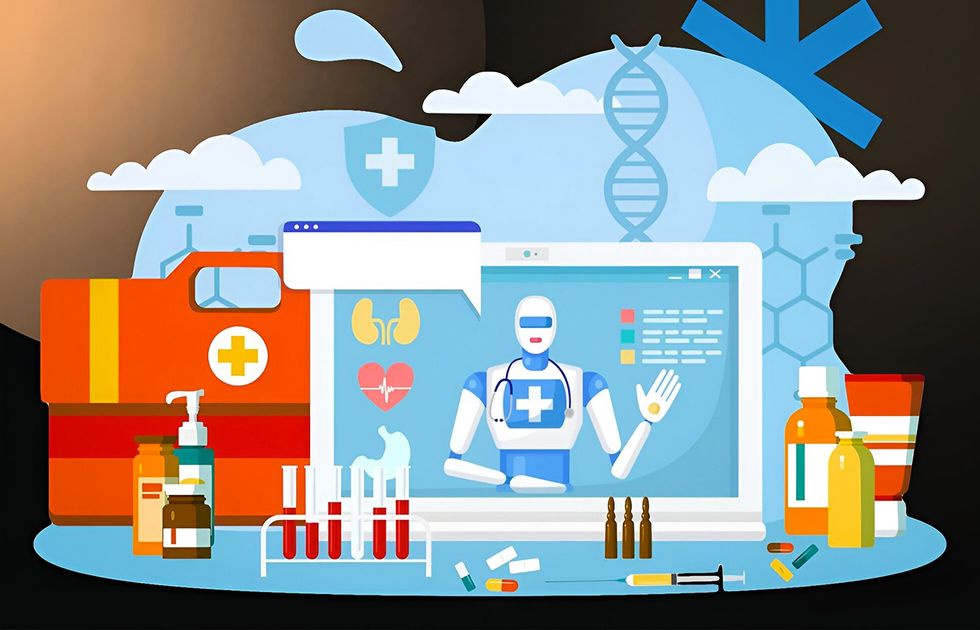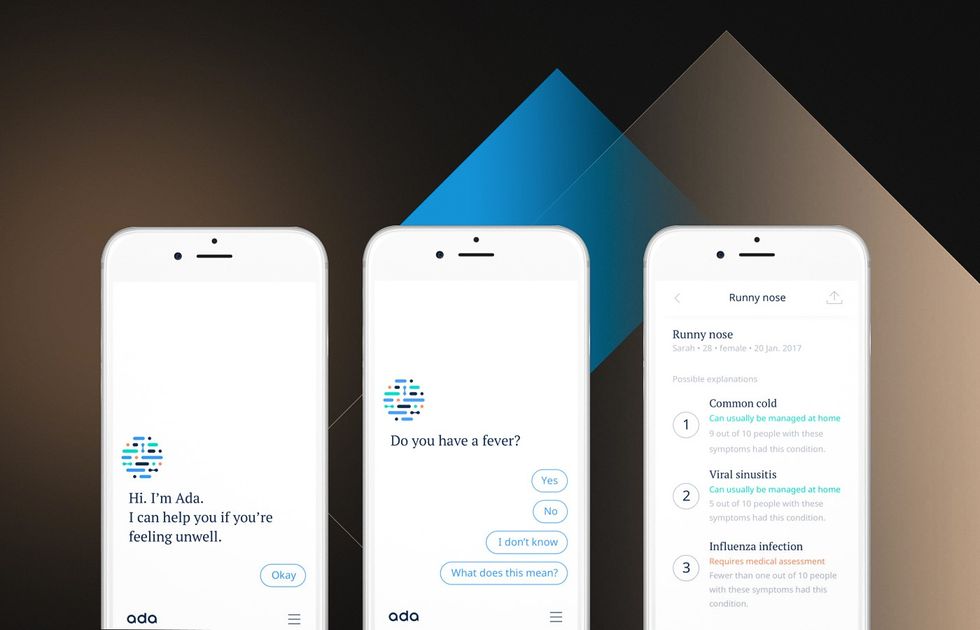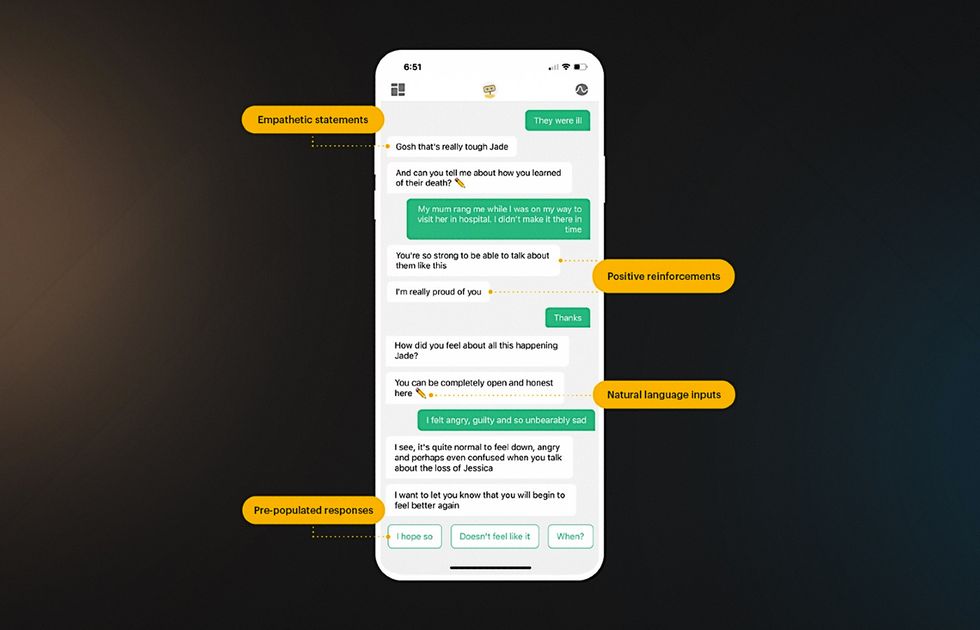
Key takeaways
- Healthcare chatbots are programs that employ artificial intelligence and natural language processing to simulate conversations with patients.
- Informative, conversational, and prescriptive chatbots offer immediate response, 24/7 availability, efficient resource management, and enhanced patient satisfaction.
- Chatbots in healthcare industry are used for appointment scheduling, data gathering, medication reminders, assessing symptoms, illness monitoring, providing mental health support, etc.
- Assess symptoms, consult, renew prescriptions, and set appointments — this isn’t even a full list of what modern chatbots for healthcare can do. They’re never tired, always ready to ease the burden on clinicians and improve the quality of care for patients. There are many more reasons for a medical business to develop a healthcare chatbot app, and you’ll find most of them in this article.
Acropolium has delivered a range of bespoke solutions and provided consulting services for the medical industry. The insights we’ll share in this post come directly from our experience in healthcare software development and reflect our knowledge of the algorithms commonly used in chatbots.
Stay on this page to learn what are chatbots in healthcare, how they work, and what it takes to create a medical chatbot.
Healthcare chatbots — what are they?

Chatbot solution for healthcare industry is a program or application designed to interact with users, particularly patients, within the context of healthcare services. They can be powered by AI (artificial intelligence) and NLP (natural language processing).
The Global Healthcare Chatbots Market, valued at USD 307.2 million in 2022, is projected to reach USD 1.6 billion by 2032, with a forecasted CAGR of 18.3%. Let’s take a look at what’s driving this growth.

Advantages of chatbots in healthcare

Chatbots for medical providers offer 24/7 availability, immediate response, efficient resource management, and enhanced patient satisfaction. It helps automate repetitive tasks, cut down costs, and provide real-time assistance to those in need of it. For instance:
- Although it’s still the doctor’s prerogative to make a diagnosis, AI algorithms can speed up the initial assessment by asking the patient about their symptoms.
- The same information can then be used by administrative personnel to admit the patient to the hospital.
- Talking to an insurance company’s chatbot can be a great alternative to filling out online questionnaires: it’s far more interactive and engaging.
Let’s discuss the pros that come with chatbot development for healthcare industry:
Immediate response
Only limited by network connection and server performance, bots respond to requests instantaneously. And since chatbots are often based on SaaS (software as a service) packages from major players like AWS, there’s no shortage of resources.
24/7 availability
Software helpers don’t tire or take breaks. Proper setup of servers guarantees almost 100% uptime.
Instant access to medical knowledge
Depending on the specific use case scenario, chatbots possess various levels of intelligence and have datasets of different sizes at their disposal. On top of that, their reaction time remains superhuman.
Smarter management of resources
Chatbots become the first point of contact between a patient and a medical facility, eliminating routine operations for doctors and nurses. This frees up time that can be redistributed on more important tasks.
High patient satisfaction
As patients continuously receive quick and convenient access to medical services, their trust in the chatbot technology will naturally grow.
Lower readmission rates
Hospitals can use chatbots for follow-up interactions, ensuring adherence to treatment plans and minimizing readmissions.
Lower care costs
Navigating budget reductions without compromising care is challenging. Healthcare chatbots help patients avoid unnecessary tests and costly treatments, guiding them through the system more effectively.
Anonymity
Some patients prefer keeping their information private when seeking assistance. Chatbots, perceived as non-human and non-judgmental, provide a comfortable space for sharing sensitive medical information. This may vary from STD concerns to mental health and sexual abuse.
3 Types of chatbots in healthcare

Informative, conversational, and prescriptive healthcare chatbots can be built into messaging services like Facebook Messenger, Whatsapp, or Telegram or come as standalone apps. Here are the qualities that define each type.
Informative Chatbots
This type of chatbot app provides users with advice and information support, taking the form of pop-ups. Informative chatbots offer the least intrusive approach, gently easing the patient into the system of medical knowledge. That’s why they’re often the chatbot of choice for mental health support or addiction rehabilitation services.
These chatbots are equipped with the simplest AI algorithms designed to distribute information via pre-set responses.
Conversational Chatbots
These health chatbots are better capable of addressing the patient’s concerns since they can answer specific questions.
Complex conversational bots use a subclass of machine learning (ML) algorithms we’ve mentioned before — NLP. In order to effectively process speech, they need to be trained prior to release. More advanced apps will continue to learn as they interact with more users.
Prescriptive Chatbots
As the name suggests, these bots take it another step further. In addition to answering the patient’s questions, prescriptive chatbots offer actual medical advice based on the information provided by the user. To do that, the application must employ NLP algorithms and have the latest knowledge base to draw insights.
Another crucial aspect to consider is the ethical constraints when consulting on sensitive matters.
Chatbot use cases in healthcare

Let’s take a moment to look at the areas of healthcare where custom medical chatbots have proved their worth.
Assess symptoms and suggest a diagnosis
A chatbot like Buoy packs a powerful symptom checker and can make inferences concerning a possible condition. Ada is another popular symptom assessment chatbot with 13 million users. Using AI algorithms and an extensive medical knowledge base, it assists individuals in checking their health state.

Gather patient data
A medical facility’s desktop or mobile app can contain a simple bot to help collect personal data and/or symptoms from patients. By automating the transfer of data into EMRs (electronic medical records), a hospital will save resources otherwise spent on manual entry. An important thing to remember here is to follow HIPAA compliance protocols for protected health information (PHI).
HealthJoy’s virtual assistant, JOY, can initiate a prescription review by inquiring about a patient’s dosage, medications, and other relevant information.
Manage insurance inquiries and claims
The process of filing insurance inquiries and claims is standardized and takes a lot of time to complete. MyCigna includes features for their management. The solution provides information about insurance coverage, benefits, and claims information, allowing users to track and handle their health insurance-related needs conveniently.
Schedule appointments
A chatbot can monitor available slots and manage patient meetings with doctors and nurses with a click. As for healthcare chatbot examples, Kyruus assists users in scheduling appointments with medical professionals.
Assist in following treatment plans
Medical chatbots provide necessary information and remind patients to take medication on time. Medisafe empowers users to manage their drug journey — from intricate dosing schedules to monitoring multiple measurements. Additionally, it alerts them if there’s a potential unhealthy interaction between two medications.
Help with medication refills
Capsule and Truepill have implemented chatbots to streamline and automate the workflows associated with prescription refills. A few words with your trusty chatbot and the renewed prescription is on the way! This feature is especially welcome when developing an online pharmacy app.
Monitor chronic illnesses
Doctors can receive regular automatic updates on the symptoms of their patients’ chronic conditions. Livongo streamlines diabetes management through rapid assessments and unlimited access to testing strips. Cara Care provides personalized care for individuals dealing with chronic gastrointestinal issues.
Provide mental health support
Woebot is among the best examples of chatbots in healthcare in the context of a mental health support solution. Trained in cognitive behavioral therapy (CBT), it helps users through simple conversations. Wysa AI Coach also employs evidence-based techniques like CBT, DBT, meditation, breathing, yoga, motivational interviewing, and micro-actions to help patients build mental resilience skills.

Help with emergency response/first aid
If the condition is not too severe, a chatbot can help by asking a few simple questions and comparing the answers with the patient’s medical history. A chatbot like that can be part of emergency helper software with broader functionality. The chatbot called Aiden is designed to impart CPR and First Aid knowledge using easily digestible, concise text messages.
Facilitate post-discharge and rehabilitation care
Chatbots can be very effective when it comes to post-surgery rehabilitation: sending reminders to exercise and take medication. Clearstep utilizes expert and conversational AI to automate post-discharge follow-ups for high-risk patients. By monitoring symptoms digitally and using predefined logic, the system reports progress to clinical teams.
Chatbot development for healthcare

The process of healthcare chatbot development begins by making several strategic choices. A quick note: embarking on this journey is safer with a dedicated team of experienced software developers. Here is the order we suggest.
Assess your needs, considering desired chatbot healthcare use cases
Find out where your bottlenecks are and formulate what you’re planning to achieve by adding a chatbot to your system. Do you need to admit patients faster, automate appointment management, or provide additional services? The goals you set now will define the very essence of your new product, as well as the technology it will rely on.
Choose the right type of conversation flow
It takes research and rigorous planning to build the right flow. Here are some guidelines to follow through the healthcare bot development:
- The conversation should be cooperative. The bot should always provide relevant answers instead of simply giving out information.
- The chatbot has to take specific context into account. When talking about sensitive issues like mental health, the chatbot’s response needs to be precise but not come across as cold or negative.
- Keeping the right pace is important. The bot’s replies shouldn’t be too long or overly technical. The app should give the user a chance to ask questions and clarify details.
Pick the AI methods to power the bot
Chatbots in healthcare use various AI mechanisms to process human speech and respond to it:
- Pattern matching. For this approach to work, your engineers will need to program the bot with the correct answers for exact patterns. If there’s no match, the software will select the closest option or admit defeat.
- Machine and Deep Learning algorithms. The most popular options include natural language processing (NLP) and natural language understanding (NLU). AI algorithms use several steps to identify and classify the concepts, actions, context, and intent of the user’s sentences. The real magic happens when these methods start learning using pre-saved datasets or building their own.
Obtain datasets and train the model
Apply different techniques to train the algorithm. Some methods require data that is structured and labeled, while others are capable of making their inferences independently. This phase is fairly complicated and requires technical oversight by engineers versed in AI.
Plan out interactions and controls, then design an appropriate UI
You’ll need to define the user journey, planning ahead for the patient and the clinician side, as doctors will probably need to make decisions based on the extracted data.
Once again, go back to the roots and think of your target audience in the context of their needs. Would they rather talk to a funny-looking robot or a gray-haired doctor? How should the chat pop up — with or without sound? What font should you use? Getting the user interface right is a process.
Build the backend to support your product’s smooth operation
Should you go with Backend as a Service (BaaS) or build it from scratch? If so, what tech stack would you use? What security mechanisms do you need to implement to safeguard the patient’s and your proprietary data? What’s the right database format and structure?
Once again, answering these and many other questions concerning the backend of your software requires a certain level of expertise. Make sure you have access to professional healthcare chatbot development services and related IT outsourcing experts.
Start building a healthcare chatbot with us today
Of course, no algorithm can compare to the experience of a doctor that’s earned in the field or the level of care a trained nurse can provide. However, chatbot solutions for the healthcare industry can effectively complement the work of medical professionals, saving time and adding value where it really counts.
Future assistants may support more sophisticated multimodal interactions, incorporating voice, video, and image recognition for a more comprehensive understanding of user needs. At the same time, we can expect the development of advanced chatbots that understand context and emotions, leading to better interactions. The integration of predictive analytics can enhance bots’ capabilities to anticipate potential health issues based on historical data and patterns.
Acropolium provides healthcare bot development services for telemedicine, mental health support, or insurance processing. Skilled in mHealth app building, our engineers can utilize pre-designed building blocks or create custom medical chatbots from the ground up.
We’ve done it all: from an addiction recovery app to a mobile app for a dental clinic, SaaS appointment scheduling, and even a pharmacy kiosk solution. Contact us to learn more about healthcare technology trends and our subscription-based service at a monthly fee.










![Building HIPAA Compliant Software The Right Way [Our story] | Acropolium](/img/articles/hipaa-compliant-software-development/img01.jpg)
![Big Data in Healthcare: [Use Cases & Applications for 2025]](/img/articles/big-data-in-healthcare/img01.jpg)

![ᐉ⭐ Blockchain in Healthcare: [6 Real Use Cases Included]](/img/articles/blockchain-technology-in-healthcare/img01.jpg)
![AI in Healthcare: Examples, Use Cases & Benefits [2025 Guide]](/img/articles/ai-in-healthcare-examples-use-cases-and-benefits/img01.jpg)